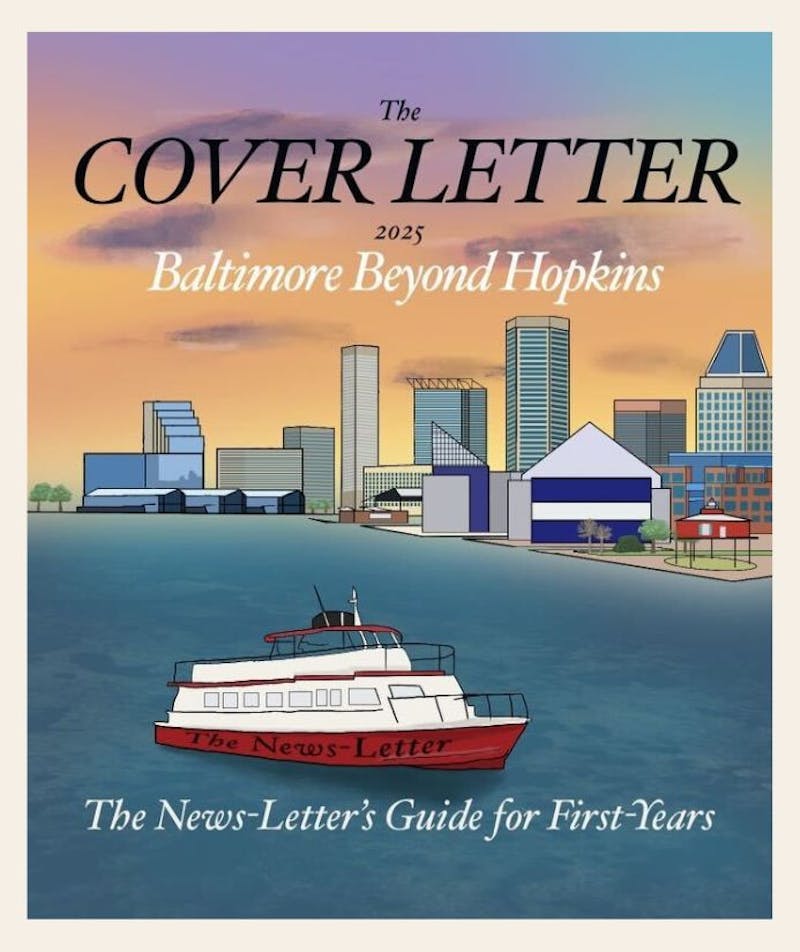Saturday night, Hopkins Symphony Orchestra's artistic director, Jed Gaylin, presented an eager audience with a more-than-generous program which he entitled "Open Spaces." Works by Alexander Borodin, Carl Nielsen and Aaron Copland were performed by the orchestra under his own direction.
Gaylin's "Open Spaces" began with Alexander Borodin's Steppes of Central Asia. Unfortunately, it began very shakily: the anticipated set of hollow E notes was impaired by splattering sounds produced by the out-of-tune brass section. However, the clarinet solo that followed may have even compensated with its long opening theme. It really did convey an image of the titular rising, sandy steppes stretching between Russian and China, but more so the desolate feeling that one would expect to experience if transported there in actuality. Although the "Open Spaces" theme of the program does imply a certain emptiness, Gaylin successfully avoided a static execution of the work, which allowed the music to breathe.
The most disappointing part of the HSO's performance of the Borodin was the sound quality and timing of the orchestra itself, rather than musical direction, especially the brass section with its intonation problems throughout the night's performance. This flaw gave their performance a sound quality closer to that of a marching band, rather than that of a symphonic orchestra. Although there were a few obviously very talented and skillful musicians and performers within the orchestra, the moments during which they were able to share these qualities with the rest of the orchestra were scarce, but delightful nevertheless.
A guest performance of Carl Nielsen's Concerto for Violin , Opus 33, followed Borodin's Steppes. The soloist of this virtuosic work was a young violinist by the name of Amy Beth Horman. Maestro Gaylin introduced her as a "fiery" artist, but this characterization was not especially evident in her interpretation of the concerto. Instead, the young violinist belted out runs in an unmusical, technically unspectacular fashion.
It is important to note, however, that there were a few brilliant passages that any member of the audience could tell were practiced for hours on end. Horman was not yet comfortable with many of the passages, and as a result played them at almost half-tempo in order to make sure he hit all of the notes. These notes ended up not being articulated properly, regardless of the sudden retardandos.
Horman performed the slow, plaintive second movement of the concerto with a withdrawn, unemotional affect. She played Nielsen's long, lyrical lines with little contrast in dynamics or expression in a nervous, unnatural, and almost stiff manner. Fortunately, the orchestra supported the soloist with their musical sensitivity. Like the first movement of the concerto, the last two sections were rather unpleasant, with unarticulated runs and phrases that lacked character. The most disappointing part was that the music sounded as if it were meaningless to her.
After the intermission, Gaylin led the Hopkins Symphony Orchestra through Aaron Copland's Outdoor Adventure. The orchestra encountered many of the same problems as in the Borodin, not the least of which was the fact that it was, quite frankly, an unconvincing performance. As in the Borodin, the brass section of the orchestra was obviously out of tune, which was a noticeable distraction to the already plain phrases, despite the exciting, energetic nature of the piece. It was an unwise choice of program on the orchestra's part, as all of its problems - lack of "togetherness" and a lower sound quality that desired - were too evident and outstanding.
The Billy the Kid Ballet Suite, another of Aaron Copland's classic compositions, closed the evening's performance. Although the opening, entitled "Introduction: The Open Prairie" provided the promised "Open Spaces," loyalty to the character of the composition did not stick. This was most notable during the "Mexican Dance and Finale." Instead of a rhythmic, tempestuous celebration of sound came a dull, dynamically-stagnant section of music that might have contained elements possibly resembling Latin harmonies and rhythms. It was an entirely sub-standard, unconvincing interpretation.
Despite numerous positive qualities to the Hopkins Symphony Orchestra's performance of their "Open Spaces" program, the lengthy concert left the audience with a rather emotionally unfulfilled feeling. From the orchestra's elementary misfortunes to Ms. Horman's more complex musical problems, "Open Spaces" was disappointing, especially because of the obvious potential which the orchestra and conductor possess.
Nevertheless, as with any concert featuring compositions of this caliber, the performance was an interesting experience from which one hopes the orchestra, soloist, conductor and audience was able to learn and take something greater than any words that can describe it.


